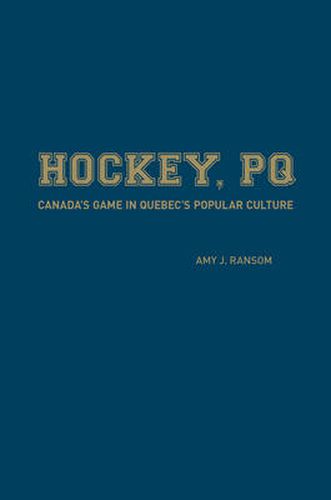Readings Newsletter
Become a Readings Member to make your shopping experience even easier.
Sign in or sign up for free!
You’re not far away from qualifying for FREE standard shipping within Australia
You’ve qualified for FREE standard shipping within Australia
The cart is loading…






A wide-ranging study that examines everything from the blockbuster movie franchise Les Boys to the sovereigntist hip hop group Loco Locass, Hockey, PQ explores how Canada’s national sport has been used to signify a specific Quebecois identity. Amy J. Ransom analyzes how Quebecois writers, filmmakers, and musicians have appropriated symbols like the Montreal Forum, Maurice Richard, or the 1972 Summit Series to construct or critique images of the Quebecois male.
Close analyses of hockey-themed narratives consider the soap opera Lance et compte (‘He shoots, he scores’), the music of former pro player Bob Bisonnette, folk band Mes Aieux, rock group Les Dales Hawerchuk, and the fiction of Francois Barcelo. Through these examinations of the role hockey plays in contemporary francophone popular culture, Ransom shows how Quebec’s popular culture uses hockey to distinguish French-Canadians from the French and to rally them against their English-speaking counterparts. In the end, however, this study illuminates how the sport of hockey unites the two solitudes.
$9.00 standard shipping within Australia
FREE standard shipping within Australia for orders over $100.00
Express & International shipping calculated at checkout
A wide-ranging study that examines everything from the blockbuster movie franchise Les Boys to the sovereigntist hip hop group Loco Locass, Hockey, PQ explores how Canada’s national sport has been used to signify a specific Quebecois identity. Amy J. Ransom analyzes how Quebecois writers, filmmakers, and musicians have appropriated symbols like the Montreal Forum, Maurice Richard, or the 1972 Summit Series to construct or critique images of the Quebecois male.
Close analyses of hockey-themed narratives consider the soap opera Lance et compte (‘He shoots, he scores’), the music of former pro player Bob Bisonnette, folk band Mes Aieux, rock group Les Dales Hawerchuk, and the fiction of Francois Barcelo. Through these examinations of the role hockey plays in contemporary francophone popular culture, Ransom shows how Quebec’s popular culture uses hockey to distinguish French-Canadians from the French and to rally them against their English-speaking counterparts. In the end, however, this study illuminates how the sport of hockey unites the two solitudes.